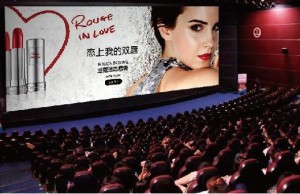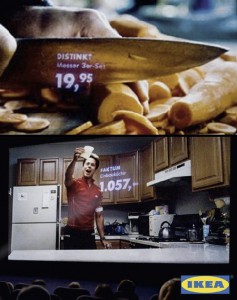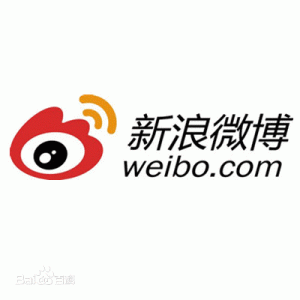Field Guide to an Art World——Cinema screen advertising
In many countries, according to the difference of advertising media we can divide advertisements into broadcast advertisements and non-broadcast advertisements. Cinema screen advertising belongs to the last one.
Cinema screen advertising is the product cooperated by the cinema and local advertisers and placed before and during film showing mostly for the promotion of local practical goods. Advertising at the movies reaches active and affluent consumers in a uniquely entertaining setting. Because of the audience’s heightened awareness, ads that fit the environment yield the best audience reception. To that end, generally, content should be image-oriented rather than price-based or overly “commercial” and should be appropriate for all ages. The ticket office demonstrates the booming and high-speed development of China Film.
In America, the forms of cinema advertising conclude posters, video programming, advertising on ticket, music programming, interactive kiosks, movie trailers, advertising in the concession, product sampling and so on. Actually for cinema screen advertising, usually called in China, we can’t find an exact word to correspond with it in English. Because in America “ cinema advertising” has broader implication, while in China we only use this to describe advertising before and during the film showing.
As a means of advertising mounted on the big film screen, cinema screen advertising is recognized by more and more moviegoers. Screen advertising is also favored by many advertisers due to its high arrival rate, excellent media expression, profound memory degree and strong distribution. At the same time, the audience have questioned on the long film advertising time, uneven levels of advertising production, and non-selectivity of advertising showing. Therefore, questions about how to improve the communication strategy of film screen advertising and rationally use it are to be solved for cinemas and theaters.
I think the research on filming advertising is not only helpful to understand the development status and contradictory solutions of foreign filming advertising, but also conducive for Chinese cinema advertising to seek progress and further development based on its current state of development. Internationally, related statements on the lack of systematic study in filming advertising, media characteristics, propagation effects, audience composition and suitable showing types of filming advertising can only be summarized from the dynamic industry of filming advertising in relatively developed nations. Cinema screen advertising in China is still in its infancy and short of operational experience, thus in some way causing the paleness of theory study on film advertising. Therefore, how to effectively deal with the problems brought about by filming advertising and how to maximize the benefits become a problem that I care about.
Since the 1970s and 1980s, the United States with highly developed film industry has begun to study the film industry and obtained rapidly increasing revenue each year in filming advertising. The Cinema Advertising Council (CAC) was formed in April 2003 to address the unique needs of the cinema advertising industry. Its primary goal is to develop standardized practices ensuring growth to the industry while respecting movie patrons’ expectations for an entertaining movie-going experience.
McLuhan once asserted: “Hollywood and film is indivisible, forming a complete world.” As two influential arts, filming advertising is clearly consistent with film in some certain aspects. China’s filming advertising is accompanied by the growth of Chinese film market all the way of its development. In the background of the rapid development of Chinese film, the majority of media practitioners and business owners are hoping to take advantage of the film media for product promotion and marketing. In 1993, China’s film launched system reform, starting to move on industrial development path. In 2002, Chinese official SARFT conducted further implementation of the liberalization policy, allowing private capital to enter the domestic film distribution division and foreign capital to participate in cinema building in the form of shares. At the same time, cinema system reform began. With the implantation of cinema system and growing foreign investment for the purpose of cinema construction, the number of cinemas and theaters and screens appeared the scene of rapid growth. From 2002 to 2014, the number of theaters increased from 1019 to 4216, and the number of screens increased from 1834 to 21229. Affected by this fact, the ticket office revenue and viewing times in cities were both rising. Thanks to the development of the film industry, cinema advertising was growing dramatically. From 2007 to 2012, the average growth rate for pre-movie adverts was 76.93%. Although China’s film advertising did not receive widespread attention earlier, but its form always follows the films. Back in the 1950s, before playing the movie theaters would show slides such as “No Smoking” and “Do not make much noise”, which was the prototype of film advertising. With the establishment and development of professional advertising agencies, film media was gradually understand and used by advertisers. In 1995, the 3-D advertising company of Beijing CCTV (the predecessor of CCTV 3-D Media Group) produced the film advertising for the film “Fugitive” of Kentucky. The film “Hero” in 2002 reached a peak of 20 million Yuan of film adverts. At the end of 2006, the film advertising durations of ” Curse of the Golden Flower” directed by Yimou Zhang was soaring to the price of 10 million Yuan, this film also received sponsorship from various industries including automotive, telecommunications, apparel , financial services and many other well-known enterprises.
On January 16th, 2008, Silver Sail Award was established, becoming China’s first media award set for on-screen advertising. This shows that the development of Chinese film advertising has entered a standardized period.




